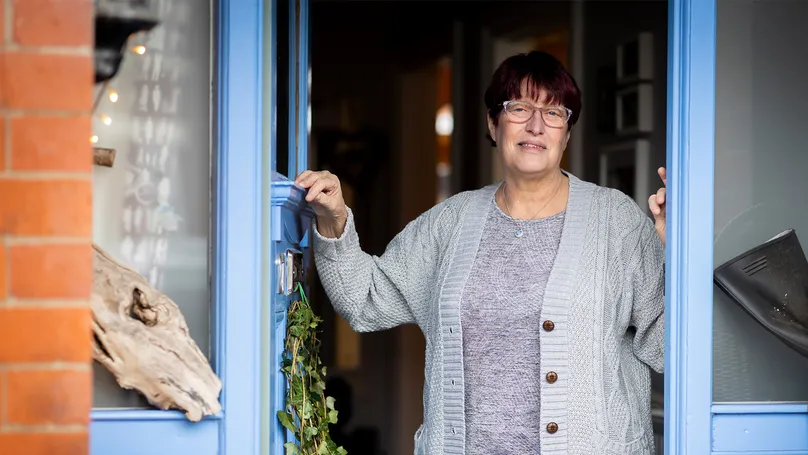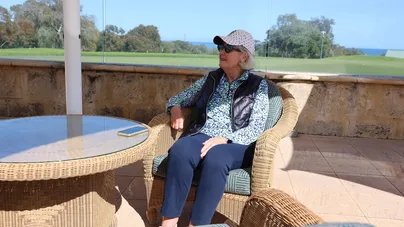A brief overview of the Support at Home program starting 1 November 2025. Learn the basics of how it works, key details, and what services it will replace for older people in Australia.

On 1 November 2025, changes will be made to the way home care services are delivered to older people in Australia. Existing programs (except the Commonwealth Home Support Program, at first) will be combined into a single new system called Support at Home (SAH).
The SAH program will improve access to:
- Services
- Equipment and products
- Home modifications
The goal is to help you stay as independent as possible – including staying healthy, active, and connected to your community.
This FAQ factsheet outlines some key points about the changes, but it doesn’t cover everything.
For more details, you can access the SAH Booklet for older people, families, and carers.
What are the basics of Support at Home?
Combines other programs
SAH will replace the Home Care Packages Program (HCP) and Short-Term Restorative Care Program (STRC).
Other programs, like the Commonwealth Home Support Program (CHSP), will also transition to the new system – but not before 1 July 2027.
Levels of ongoing support
SAH will have 8 levels of support for ongoing services. Each level comes with a set budget for services based on the person's needs.
If you already access the HCP Program, you’ll move to SAH on 1 November. You’ll keep the same level of funding you had for your HCP to access SAH-approved services.
Service providers
All SAH participants will have access to care management from a provider. The provider may deliver your services directly. They may also coordinate services from other providers. There is also an option to self-manage the way some of your services are provided.
Paying for Support at Home
Contributions
You’ll only pay contributions for the services you use.
You won't have to contribute to the cost of clinical care, such as nursing and physiotherapy. The government will fully cover these services.
How much you pay for other services depends on the type of service, and your income and assets. People on the Age Pension or with a Commonwealth Seniors Health Card will pay less than self-funded retirees.
Some people may meet the criteria for financial hardship assistance.
You can use the Support at Home fee estimator to see what your costs might be.
Price caps
The Government will limit how much SAH services can cost through price caps.
When will price caps start?
SAH price limits will take effect after 1 July 2026.
What to expect before price caps take effect
In 2025, care providers will continue to set their own prices for SAH services, as they have done for the HCP program. If you currently have an HCP, the prices for services you receive may change when you move to SAH.
The Government has put consumer protections in place from 1 November 2025. These protections will ensure SAH prices remain fair, even before price caps start.
You can learn more about these protections, and what to do if you’re concerned about prices, by reading the SAH Consumer protections factsheet.
How will Support at Home work?
Assessments
If you’re not already receiving services, or if your needs have changed, you'll need to have an aged care needs assessment.
This checks if you’re eligible for the program and what level of support you need. After the assessment, you’ll get a personalised support plan to share with an aged care provider.
Transitioning from Home Care Packages
If you’re currently receiving a Home Care Package (HCP), you’ll move to SAH with the same level of funding you already have. You can request a reassessment if your needs have changed.
If you’re currently waiting for an HCP, you will move to the Support at Home Priority System. Once a spot is available, you’ll receive a budget similar to your HCP amount. You won’t need a reassessment unless your needs change.
Supporting independence
The program will focus on helping early with things that support independence, such as:
- Allied health services (like physical therapy or occupational therapy)
- Exercise programs
- Tools for daily living (assistive products)
- Home modifications
When does Support at Home start?
- SAH will begin on 1 November 2025. At this date it will replace the HCP and STRC programs.
- The CHSP will transition into SAH after 1 July 2027.
Why is this important?
The Support at Home program aims to help older people in Australia maintain independence while living at home. It'll make it easier and more affordable for people to access high-quality in-home care.
The program will provide services that are more:
- Personalised
- Efficient
- Accessible
This could support you to live at home for longer – and enjoy a better quality of life.
You can learn more by reading the Australian Government’s Support at Home program booklet.
References
Australian Government Department of Health, Disability and Ageing. (2025, October). Support at Home program – Booklet for older people, families and carers. https://www.health.gov.au/resources/publications/support-at-home-program-booklet-for-older-people-families-and-carers
Australian Government Department of Health, Disability and Ageing. (2025, September 18). Support at Home participant contributions. https://www.health.gov.au/our-work/support-at-home/support-at-home-participant-contributions
Australian Government Department of Health, Disability and Ageing. (n.d.). Upcoming changes to aged care funding: How they affect you. https://www.myagedcare.gov.au/upcoming-changes-aged-care-funding-how-they-affect-you
Australian Government Department of Health, Disability and Ageing. (2025, October). Consumer protections for Support at Home prices – fact sheet for participants. https://www.health.gov.au/sites/default/files/2025-10/consumer-protections-for-support-at-home-prices-fact-sheet-for-participants.pdf
Australian Government Department of Health, Disability and Ageing. (2025, June 6). Aged care needs assessments. https://www.health.gov.au/our-work/single-assessment-system/needs
How to use this information
LiveUp provides free information to help you make informed decisions about your health. This information is for general and educational purposes only, is not intended to provide a comprehensive guide, and does not replace medical advice. Everyone is different, so some of these tips may work better for you than others. You should use your own judgment and seek medical advice when applying this information to yourself, to determine if it is suitable in your circumstances. Your use of, or reliance on, this information is solely at your own risk. Independent Living Assessment Incorporated is not responsible or liable for any injury, loss, or damage caused as a result of your use of, or reliance on, this information.
Download and print this article:
You can print out the PDF and stick it to your fridge or file away the tips to revisit at a later time.

Read more Maintain my health articles
Did you enjoy this article? You may also like reading similar healthy ageing articles.
See all Maintain my health articles

